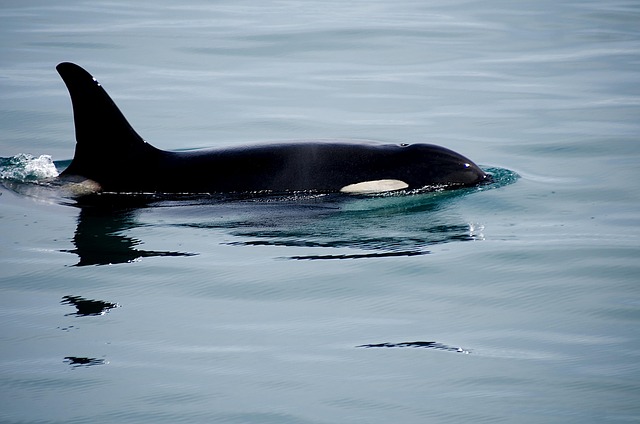Scuba divers diving along a popular site inside Table Mountain National Park discovered a broadnose sevengill shark graveyard within a protected area known to be home to an exceptionally large group of the sharks.
At any given time, divers in this area typically come across roughly 70 sharks in an hour-long dive, this is the only noted place in the world that is as populated by such a large concentrated number of sevengill sharks.
The cause of the mass deaths remained a mystery at first due to the inability to recover shark bodies for examination, and suspicions fell on great white sharks, humans and killer whales, or orcas.
Months later scientists managed to examine shark carcasses and determined that the culprit was indeed orcas.
After reviewing information on orca behavior, dietary specialisation and population delineation both globally and locally, it was decided these attacks might be due to the arrival of a different sub-group of killer whales that feed specifically on sharks.
For a long time broadnose sevengill sharks have occupied the apex of the food chain, alongside great white sharks, in False Bay on the southern tip of South Africa.
Both species feed on seals, dolphins, fish, and other sharks, however, the structure of the False Bay food chain began to change significantly in 2015 when a “new” predator, shark-eating orcas, appeared on the scene.
At the same time as the dead sharks were first discovered, a local whale-watching charter documented the arrival of two new killer whales in the bay in January 2015. These individuals were easily identifiable by their characteristic bent dorsal fins, and were nicknamed “Port” and “Starboard”. They were sighted near the sevengill aggregation site at the time of both incidents of mass shark deaths in 2015 and 2016.
It is suspected that these same two orcas were also responsible for the deaths of five great white sharks further up the coast in Gansbaai in 2017.
Similarly to the sevengill sharks, the wound patterns found on the great whites were the same and their livers were missing during examinations of the carcasses. Scientists found that the sharks had large, gaping wounds between their pectoral fins and while their livers were missing, the rest of their internal organs such as the heart, stomach and reproductive organs were left untouched.
The distinctly evenly-spaced, circular tooth impressions left by the bite marks on the pectoral fins were identified as most likely being made by a “flat-toothed” killer whale, a type which is rare in coastal waters. There were no bites anywhere else on the sharks’ bodies, indicating that the orca (or orcas) had likely pulled on the pectoral fins to open up the body cavities in order to remove the livers. A great white shark’s liver accounts for up to a third of its weight and is rich in fat, a nutrient that killer whales seek out.
What does this mean for Cape Town’s shark population?
The arrival of a new predator could cause the high population of both sevengill and great white sharks to move out of the area in an effort to avoid being hunted.
Scientists are concerned that this may lead to a natural decline in shark species in the area. In a case in the Aleutian archipelago between 1990 and 1997, orcas began targeting sea otters in the area and caused a massive decline in their numbers along the archipelago. This had a knock-on effect as sea urchin (sea otter’s preferred food) populations exploded. As sea urchins’ primary food is kelp, this increase resulted in the deforestation of kelp forests in the region.
Sharks form an important part of the ocean food chain, acting as essential predators to maintain diverse and healthy ecosystems, because of this a loss of these fearsome fish could have significant impacts on our oceans.
Picture: Pixabay






